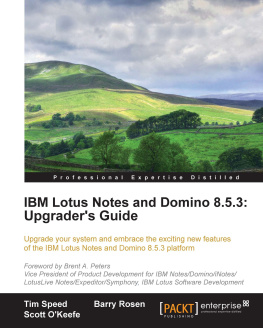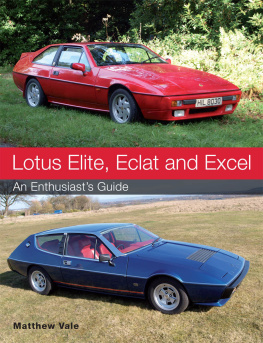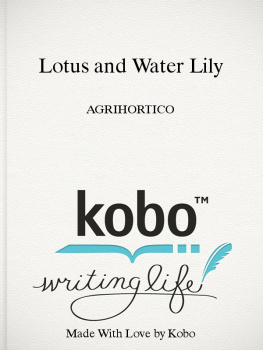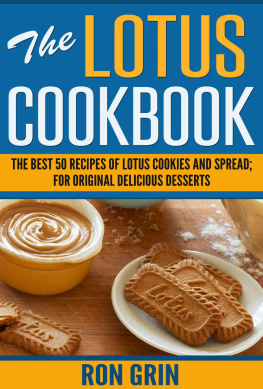Foreword
It's hard to believe that it has been over 22 years since the first release of Lotus Notes was shipped! In an era where software technology continues to evolve at unprecedented speed, and software companies, products, and standards come and go, it is a significant accomplishment that Lotus Notes is just as relevant today as it was back in 1989.
Over the years, Lotus Notes has continued to embrace new technologies and open standards, all the while providing compatibility for previous releases. Backed by a strong and vibrant community of business partners and developers, Lotus Notes social and real-time collaboration features allow you to build relationships, and leverage your current investments, to create new opportunities for growth, innovation, and productivity.
The latest release of IBM Lotus Notes and Lotus Domino continues to expand its rich client ecosystem with forward-thinking, out-of-the-box features that are both cost-effective and innovative, provides integrated collaboration on multiple devices, and allows for rapid application development, while maintaining the highest quality in the industry.
New to Notes/Domino 8.5.3 is a companion product entitlement via Notes Client Access License (CAL). This allows entitlement to Lotus Connections Files and Profiles for Lotus Notes which exposes customers to new technology that allows them to become a social business.
This book will cover the following enhancements to IBM Lotus Notes and Domino 8.5.3 in the following areas:
Mail, Calendaring, Contacts, iNotes, and Designer.
Written by some of the senior architects and specialists of IBM Software Services for Lotus, this book will provide you with an excellent guide to help you realize the value of your investment in Lotus Notes 8.5.3. You will learn how to leverage the full capabilities of Lotus Notes 8.5.3 and how to quickly move from your existing technology base to this new, feature-rich platform. The authors explore the enhanced productivity tools available with this release, integrating word processing, presentations, and spreadsheets into a seamless unit with your messaging and collaboration solution.
Developers are not forgotten, as new features and tools are revealed. You will delve into the world of SOA, as the authors show you how Lotus Notes can be part of an SOA strategy that can accelerate your business integration and generate value. The book finishes with a few words about other Lotus products, such as Lotus Sametime, Lotus Quickr, Lotus Connections, and IBM WebSphere Portalsuch as IBM Lotus Notes, all built on the open standards-based Eclipse Rich Client Platform (RCP) technology. These products are all converging to become the next generation of people productivity solutions.
Over the years, Lotus Notes has come to signify the essence of electronic business communications. With Lotus Notes 8.5.3, IBM has once again provided the user with an intuitive, fully integrated platform to enhance each user's experience with business communications. It is no longer just an e-mail tool, but a basis to extend business communications to a new level.
I hope you find this book valuable as you continue your journey with IBM Lotus Notes and Lotus Domino 8.5.3.
Brent A. Peters
Vice President of Product development for Notes/Domino/iNotes/LotusLive Notes/Expeditor/Symphony
IBM Lotus Software Development
About the Authors
Tim Speed is an IBM Certified Systems Architect with IBM Software Services for Lotus. In that capacity, he is responsible for designing, implementing, and supporting various engagements with its clients. Mr. Speed lives in Texas and has been an IBM/Lotus employee for over 16 years in a variety of networking, technical, hardware, and software support and consulting positions. He has been working with Notes for over 20 years focusing on administration roles and infrastructure. He also has international experience with working on infrastructure engagements in Spain, Japan, Hong Kong, Singapore, Malaysia, the UK, and Indonesia.
Knowledge is based on many different facetswhat you know, knowing where information can be found, and who you know. The information in this book is a combination of all these facets. Data sources have been referenced in this book; these include references to people, URLs, and other books. But much of the knowledge that is in this book comes from very smart people. Not all the people listed in this acknowledgment participated in the writing of this book, but have influenced and guided me in my life that has culminated in this work. First and foremost, I need to thank my wife for helping me with the book and providing some of the editing throughout the various chapters. Next, I want to thank Johnny and Katherine for tolerating me during the months that I worked on this book. Next, I want to thank my mother, Lillian Speed, for teaching me to "think big". Thanks to Ed Speed for the inspiration to keep publishing. Thanks to Packt, in particular Kerry George, for their hard work in getting this book published.









